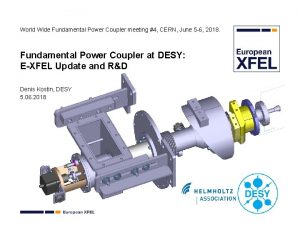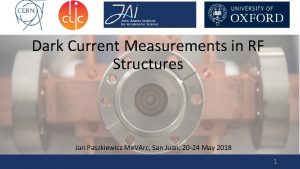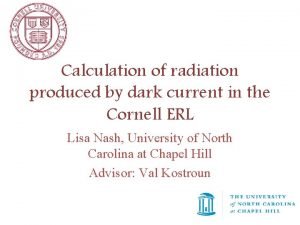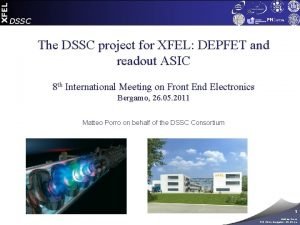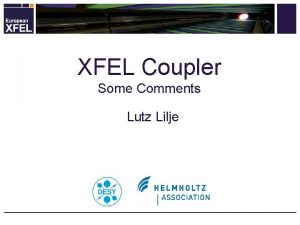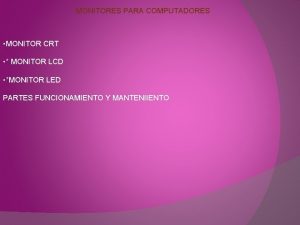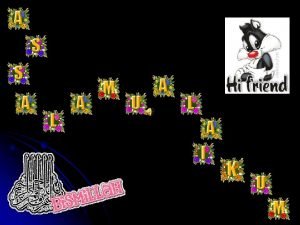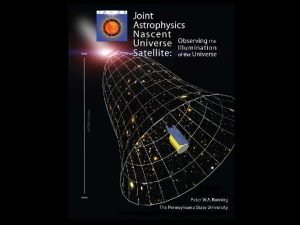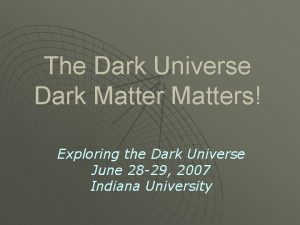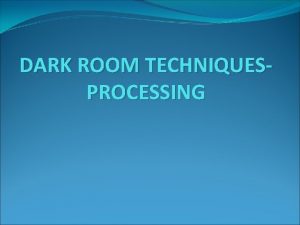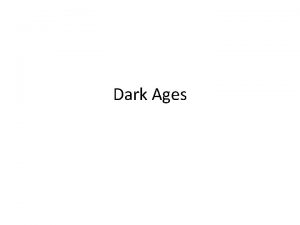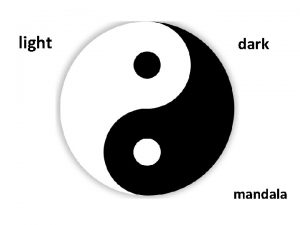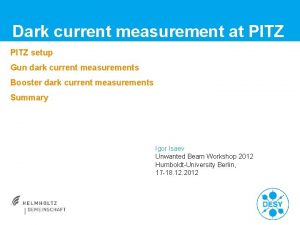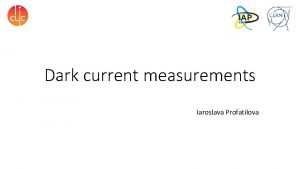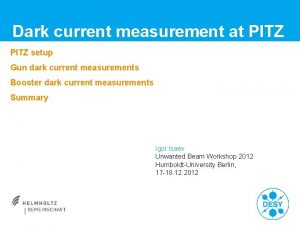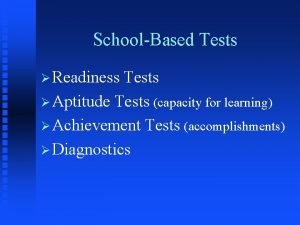Dark current Monitor for the European XFEL tests
























- Slides: 24

Dark current Monitor for the European XFEL, tests at PITZ and FLASH D. Lipka DESY Hamburg

Dark current Monitor for the European XFEL, tests at PITZ and FLASH Content n n n n European XFEL layout Principle of dark current detection Monitor Setup at PITZ and FLASH Electronics Measurement of dark current and bunch charge Summary D. Lipka; MDI; DESY Hamburg; UBW 2012; Berlin 2

Dark current Monitor for the European XFEL, tests at PITZ and FLASH Dark current Production of dark current due to field emission in accelerator n Causes radiation background in the tunnel: destroys electronics and activate components n Decrease dark current due to kickers, chicane and collimators n Beamline of the European XFEL n Need non-destructive monitor to measure efficiency of dark current reduction, few monitors will be installed D. Lipka; MDI; DESY Hamburg; UBW 2012; Berlin 3

Dark current Monitor for the European XFEL, tests at PITZ and FLASH European XFEL layout and Dark current Monitor n Proposed monitor position are indicated by arrows D. Lipka; MDI; DESY Hamburg; UBW 2012; Berlin 4

Dark current Monitor for the European XFEL, tests at PITZ and FLASH Principle of detecting weakly charged bunches with a resonator 5 A passive resonator will be used because the induced field strength due to electrons has the potential to detect very low beam charges Induced voltage in a resonator from a beam oscillates with resonance frequency f and decays with decay time t. QL: loaded quality factor. Field distribution of 1. monopole mode Simulation view By measuring U 0 the charge of the beam q is determined. for monopole modes Sensitivity S can be determined by resonance frequency f, line impedance Z=50Ω, external quality factor Qext and normalized shunt impedance (R/Q). D. Lipka; MDI; DESY Hamburg; UBW 2012; Berlin

Dark current Monitor for the European XFEL, tests at PITZ and FLASH Principle of detecting dark current with resonator 6 Charge of one dark current bunch too weak to be detected: superimposing of induced fields from the dark current bunches when resonance frequency of resonator harmonic of accelerator I Dt = 1/(1. 3 GHz) = 1/f n Dark current bunches within 2 RF oscillations Expected/simulated voltage f=1. 3 GHz, QL=205 for I=1 m. A and 1000 dark current bunches Transient oscillation finished after 150 ns D. Lipka; MDI; DESY Hamburg; UBW 2012; Berlin t

Dark current Monitor for the European XFEL, tests at PITZ and FLASH The monitor n The monitor consist of 2 stainless steel discs, brazed together, with 2 antennas and feedthroughs 2 versions available: injector with 34 mm and beamline with 40. 5 mm diameter n Parameter goals: f=1. 3 GHz, QL=205 n Cross section D. Lipka; MDI; DESY Hamburg; UBW 2012; Berlin 7

Dark current Monitor for the European XFEL, tests at PITZ and FLASH Setup at the Photo Injector Test Facility at DESY Zeuthen (PITZ) n n n 8 PITZ: characterize, optimize and prepare electron source for FEL Dark current Monitor (Da. Mon) situated 2. 36 m behind cathode followed by booster 0. 68 m Measurement: fl=1299. 3± 0. 1 MHz, QL=193± 5, Qext=252± 4 Expectation agree with measurement (resonator without tuner) Shunt impedance from simulation, results in sensitivity of 11. 83 V/n. C NWA measurement result in tunnel to detect resonator properties Photo: J. Lund-Nielsen D. Lipka; MDI; DESY Hamburg; UBW 2012; Berlin

Dark current Monitor for the European XFEL, tests at PITZ and FLASH Setup of the monitor in FLASH A 34 mm type is installed at the first bunch compressor like in PITZ n Measurement: fl=1299. 0± 0. 1 MHz, QL=192± 5, Qext=248± 4 n Shunt impedance from simulation, results in sensitivity of 11. 88 V/n. C n D. Lipka; MDI; DESY Hamburg; UBW 2012; Berlin 9

Dark current Monitor for the European XFEL, tests at PITZ and FLASH Electronics This autumn produced 3 new electronics; up to this only 1 prototype was available n Two inputs according of two outputs of Da. Mon: § Beam charge § Dark current n Includes circulator, band-pass filters, limiter, pre-amplifier, down conversion to IF, logarithmic detector, offset and gain control n Two outputs for ADC n D. Lipka; MDI; DESY Hamburg; UBW 2012; Berlin 10

Dark current Monitor for the European XFEL, tests at PITZ and FLASH Calibration n Calibration is done by adapting the laboratory calibration measurement of electronics input/output to a function provided by the control group for the available ADC Therefore non-linearity values for low and high values are not successful adapted, e. g. if the charge below 3 p. C the line shows still 3 p. C but the data are below. In addition the base line of 3 p. C does not need to be corrected because for the given measurement range the calibration line is in agreement with the laboratory data D. Lipka; MDI; DESY Hamburg; UBW 2012; Berlin 11

Dark current Monitor for the European XFEL, tests at PITZ and FLASH Measurement of dark current at PITZ 12 Without electronics ADC observed dark current, scale logarithmic n output without electronics is at sensitivity limit of oscilloscope n Analyzed data after electronics show about 30 µA n Distribution of both measurement in agreement n D. Lipka; MDI; DESY Hamburg; UBW 2012; Berlin With electronics

Dark current Monitor for the European XFEL, tests at PITZ and FLASH Measurement of dark current at PITZ Solenoid used such that DC was maximized Here FC 1 used. Error bars are standard deviations. er RF w po Observation limit of FC: few µA DC at Da. Mon 2. 5 times lower compared to FC 1 n DC at FC 2 about 2 times lower compared to FC 1 → Calculated DC at Da. Mon in agreement with FC n Da. Mon FC 2 Dipole FC 1 Beam direction 98 cm D. Lipka; MDI; DESY Hamburg; UBW 2012; Berlin 58 cm 13

Dark current Monitor for the European XFEL, tests at PITZ and FLASH Measurement of dark current at PITZ 14 Log scale n n n Measured dark currrent with Da. Mon as a function of injector solenoid current FC can not resolve these low values Lowest observed dark current is 52 ± 13 n. A Observation limit of Da. Mon system about 40 n. A For very low beam charges the dark current electronics can be used to observe the charge D. Lipka; MDI; DESY Hamburg; UBW 2012; Berlin Linear scale One beam: dark current electronics in saturation

Dark current Monitor for the European XFEL, tests at PITZ and FLASH Measurement of bunch charge at PITZ Beam charge 0. 34 n. C (measured with Faraday Cup: FC) Signal after low-pass filter on oscilloscope Voltage amplitude Signal from electronics Base line Electronics provides voltage amplitude which will be re-calculated in bunch charge and dark current Photo: J. Lund-Nielsen D. Lipka; MDI; DESY Hamburg; UBW 2012; Berlin 15

Dark current Monitor for the European XFEL, tests at PITZ and FLASH Measurement of bunch charge at PITZ n Voltages calibrated with electronics response function, attenuation of cables and attenuators. n n n smaller fluctuation compared to Faraday Cup for low charges Sub-Pico-Coulomb resolution with Da. Mon visible Still 20 d. B attenuation used Da. Mon 2% higher charge compared to FC (loss of charge at FC) Good agreement between laboratory calibration measurement including simulated shunt impedance and measured charge with FC D. Lipka; MDI; DESY Hamburg; UBW 2012; Berlin 16

Dark current Monitor for the European XFEL, tests at PITZ and FLASH Measurement of bunch charge at PITZ Signal without electronics 17 Signal with electronics q ≈ 0. 34 n. C Comments n The bunch spacing at PITZ is 1 ms, decay time withouth and with electronics measurement sufficient n Bunch spacing for European XFEL is 222 ns, decay time is sufficient for single bunch measurements D. Lipka; MDI; DESY Hamburg; UBW 2012; Berlin Response function of electronics calibrated Due to logarithmic detection lower amplitudes amplified Results in high dynamic range: 70 d. B

Dark current Monitor for the European XFEL, tests at PITZ and FLASH Measurement of dark current at PITZ 18 Strong dark current in backward direction from booster, on calibration limit n Gun dark current much lower, can be separated by different RF pulse duration n Gun and booster RF on Measurements Spring 2011 D. Lipka; MDI; DESY Hamburg; UBW 2012; Berlin Only gun RF on

Dark current Monitor for the European XFEL, tests at PITZ and FLASH Measurement of dark current at PITZ A vacuum event in the gun produced an additional charge spike in the dark current output n This can be seen in the time domain compared to the RF pulse n Measurement Dec. 2012 D. Lipka; MDI; DESY Hamburg; UBW 2012; Berlin 19

Dark current Monitor for the European XFEL, tests at PITZ and FLASH Measurement of beam charge at PITZ Beam charge is monitored as well with higher resolution (compared to Toroids) n Charge spike is visible in dark current output n Measurements Spring 2011 D. Lipka; MDI; DESY Hamburg; UBW 2012; Berlin 20

Dark current Monitor for the European XFEL, tests at PITZ and FLASH Measurement of dark current at FLASH n Measured behind second accelerator module n Gun and module are producing dark currents D. Lipka; MDI; DESY Hamburg; UBW 2012; Berlin 21

Dark current Monitor for the European XFEL, tests at PITZ and FLASH Measurement of dark current at FLASH At the history of the dark current measurement a gap was visible n This was verified by the beam loss system (with lower resolution) n A RF event stops RF in the gun and restarted after several µs, therefore such gap can be produced z=32 m Beam loss output, z=177 m Measurement Dec. 2012 D. Lipka; MDI; DESY Hamburg; UBW 2012; Berlin 22

Dark current Monitor for the European XFEL, tests at PITZ and FLASH Summary n n n Design of a dark current monitor to detect dark current and beam charge non-destructively for the European XFEL Described: principle, monitor, electronics, calibration Shown: measurement of dark current and bunch charge at PITZ and FLASH Different dark current sources are visible due to different RF time durations Better beam charge resolution compared to Toroids D. Lipka; MDI; DESY Hamburg; UBW 2012; Berlin 23

Dark current Monitor for the European XFEL, tests at PITZ and FLASH Acknowledgement n n n Mechanics: W. Kleen, S. Vilcins, Electronics: J. Lund-Nielsen, F. Schmidt-Föhre, J. Neugebauer Support: D. Nölle, PITZ team FLASH team Thanks for your attention! D. Lipka; MDI; DESY Hamburg; UBW 2012; Berlin 24
 Xfel
Xfel Ace different iq tests but still
Ace different iq tests but still In a dark dark town
In a dark dark town Dark matter and dark energy presentation
Dark matter and dark energy presentation European jobs monitor
European jobs monitor European home improvement monitor
European home improvement monitor Dark current measurement
Dark current measurement Dark current calculation
Dark current calculation Drift current and diffusion current
Drift current and diffusion current Balanced wye delta connection
Balanced wye delta connection Gm formula for mosfet
Gm formula for mosfet Hazard based safety engineering
Hazard based safety engineering Line current and phase current
Line current and phase current Infineon
Infineon Line current and phase current
Line current and phase current Kcl mesh analysis
Kcl mesh analysis Drift current density unit
Drift current density unit Drift current and diffusion current in semiconductor
Drift current and diffusion current in semiconductor Phase to phase voltage
Phase to phase voltage Ceramic composition resistors
Ceramic composition resistors Dcep welding
Dcep welding Strategi för svensk viltförvaltning
Strategi för svensk viltförvaltning A gastrica
A gastrica Boverket ka
Boverket ka Informationskartläggning
Informationskartläggning
